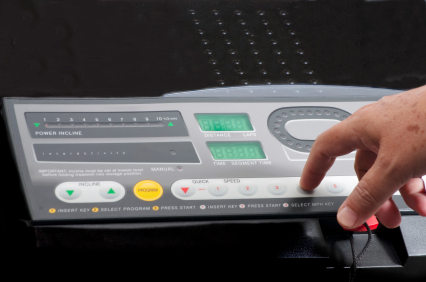No one wants to go to the gym and do the same workout day after day. The truth is it’s important to vary the intensity, length, and type of workouts you do. So how do we go about ensuring we’re doing our bodies justice when performing physical activity? The answer…the right mix of cardio and weight training ultimately depends on your goals, but there are things you should know about each.
Individual Benefits of Cardio and Weight Training
It’s no secret that cardiovascular activity improves heart function. In fact, cardio means “- of or relating to the heart.” Cardio improves performance of the entire cardiovascular system, allowing more efficient blood flow, producing lower workloads for the heart, and allowing the body to take in and utilize oxygen more freely. Overall, cardiovascular activity results in a more efficient body, improving the function of all organs during exercise and rest. And of course, an added benefit of cardio is calorie burn!
Weight training, also referred to as resistance training, can produce increases in muscular size, strength, and power. This type of training also improves bone strength and strengthens the body’s connective tissue (tendons and ligaments). An added benefit of muscle gain through weight training is a decrease in body fat percentage. Because muscle is more metabolically active than other types of tissue in the body, it burns more fat calories, thereby increasing the percentage of lean muscle mass.
Combining the Two
If your goal is overall fitness or weight loss, exercise order is less important: Many people wonder whether to perform cardio or strength training first in their workout session. Ultimately, this will depend on your goals. The important thing to remember is that energy levels will deplete as you workout. Therefore, if your goal for the day is strength training, you should lift weights first (while you have the most energy). If your goal is aerobic endurance, then perform cardio first. Another option is to perform split routines, breaking up your cardio and weight training by working out at different times of the day.
If your goal is to add significant muscle and train for endurance, gains in size and strength will take longer: You should incorporate both strength and aerobic training into your fitness routine. It’s important to note, however, that when both resistance and aerobic training programs are combined, aerobic endurance increases at a normal rate while muscular strength and size gains are slowed. For someone whose goal is to pack on muscle, performing cardio on a regular basis will slow the amount of muscle generation. If your goal is to improve cardiovascular endurance you can add weight training without sacrificing your endurance goals.
Phase your training: For those who have separate strength and endurance goals, another option is to perform phased training. This type of program consists of a period of endurance training (up to eight weeks) to build an aerobic base, followed by a period of resistance training with minimal cardio to maintain aerobic capacity (also up to eight weeks). After these phases are complete, alternate every few weeks with minimal portions of the other type of exercise in order to maintain fitness levels. You will see improvements in both aspects of your fitness routine, albeit at a slower rate than if you only focused on cardio or resistance.
Cardio and weight training are part of any complete fitness program. Both should be incorporated into your routine, along with flexibility training and a healthy diet. Whichever exercise order you decide upon, it’s important to remember your pre-exercise warm up and post-exercise stretching.
 Fat Burning Made Simple
Fat Burning Made Simple